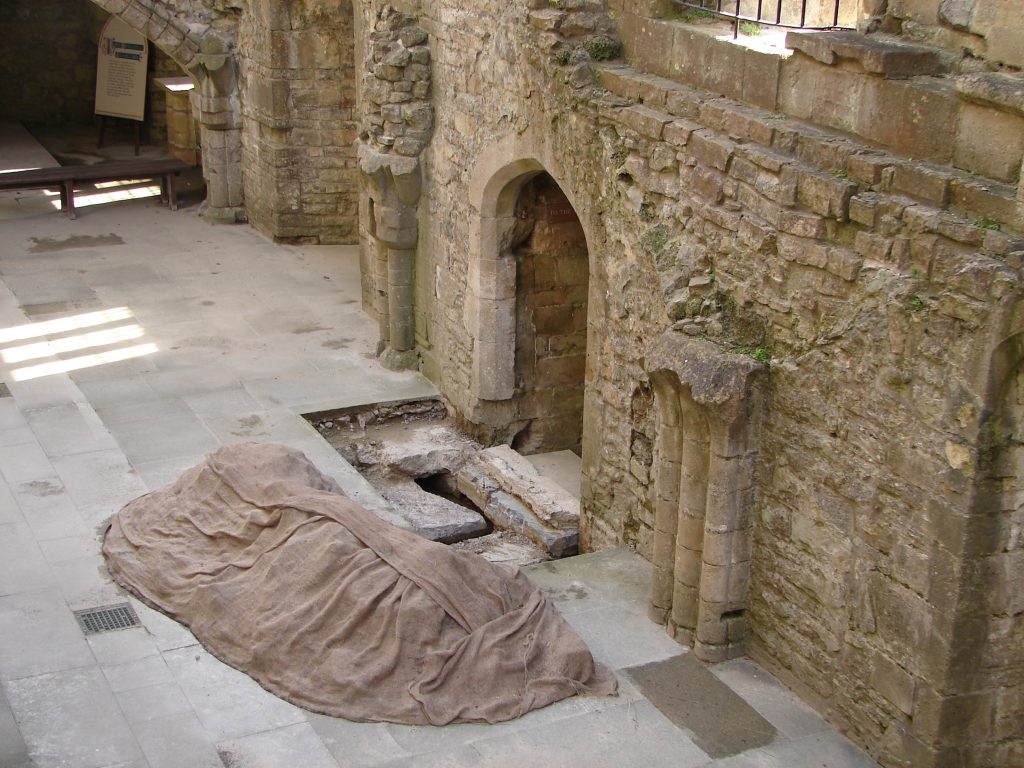 Glastonbury in 1397 is the setting for Joseph of Arimathea’s Treasure, the fifth novel in my Lady Apollonia West Country Mystery Series. I tried to show in my previous post that the medieval history of the town of Glastonbury was intimately tied to Glastonbury Abbey. Here I will speak of the history of the abbey itself.
Glastonbury in 1397 is the setting for Joseph of Arimathea’s Treasure, the fifth novel in my Lady Apollonia West Country Mystery Series. I tried to show in my previous post that the medieval history of the town of Glastonbury was intimately tied to Glastonbury Abbey. Here I will speak of the history of the abbey itself.
The most ancient church on the site of Glastonbury Abbey was the vetusta ecclesia in Latin, or the old church in English. It survived until the abbey fire of 1184, but its origins are unknown. Some believe it was the nucleus of a British monastery which preceded the Anglo-Saxon institution of the late 7th to 8th centuries. Some believe the history of this church began with the legends of Joseph of Arimathea who brought Christianity to Glastonbury in the first century. I will discuss those legends in a future post.
The medieval abbey became the richest and most venerated monastic foundation in England, first under the patronage of the Saxon King Ine who is said to have built a stone church to the east of the old church around 720 AD. The abbey was further strengthened by a mid-10th century abbot, Dunstan, who brought the Benedictine Rule to the abbey. He later became Archbishop of Canterbury and was canonised in the 11th century. After the Norman Conquest, Glastonbury Abbey added extensive building to the church including the Lady Chapel in the west and considerable building additions to the east. At the time of the Doomsday Book in 1086 Glastonbury was the wealthiest monastery in England.
Much of this monastery was destroyed in a great fire of 1184. To help revive the fortunes of the abbey, the monks utilised the legend of King Arthur which I will discuss in a later post. They discovered bones in the abbey cemetery which they identified as King Arthur and his Queen, Guinevere. Later, in 1278, these remains were reburied inside the abbey church in a ceremony attended by King Edward I. By then, the new building had been completed in the Gothic style, and the monks were promoting pilgrimage to support the abbey.
The 14th century saw the construction of fine separate living quarters for the abbot. Another development, particularly by 1397 when my story is set, was the monks encouragement of the legends of Joseph of Arimathea. A well in the crypt of the Lady Chapel was named in the 14th century as Saint Joseph’s Well and plays a part in my story. The access to this well is shown in the picture at the top. It is possible that this ancient well influenced the location of the vetusta ecclesia or ancient old church built in the previous millennium.
For more on the history of Glastonbury Abbey, click on
http://www.glastonburyabbey.com/history_archaeology.php?sid=cb9c97f5fa43841fbb7de44e66bbcec4 or on
https://en.wikipedia.org/wiki/Glastonbury_Abbey .
Tags: Chaucer's England, historical fiction, medieval mysteries